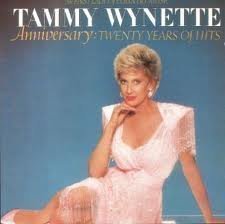The full moon is the lunar phase when the Moon appears fully illuminated from Earth's perspective. This occurs when Earth is located between the Sun and the Moon (when the ecliptic longitudes of the Sun and Moon differ by 180°). This means that the lunar hemisphere facing Earth—the near side—is completely sunlit and appears as an approximately circular disk. The full moon occurs roughly once a month.
The time interval between a full moon and the next repetition of the same phase, a synodic month, averages about 29.53 days. Therefore, in those lunar calendars in which each month begins on the day of the new moon, the full moon falls on either the 14th or 15th day of the lunar month. Because a calendar month consists of a whole number of days, a month in a lunar calendar may be either 29 or 30 days long.
Characteristics
A full moon is often thought of as an event of a full night's duration, although its phase seen from Earth continuously waxes or wanes, and is full only at the instant when waxing ends and waning begins. For any given location, about half of these maximum full moons may be visible, while the other half occurs during the day, when the full moon is below the horizon. As the Moon’s orbit is inclined by 5.145° from the ecliptic, it is not generally perfectly opposite from the Sun during full phase, therefore a full moon is in general not perfectly full except on nights with a lunar eclipse as the Moon crosses the ecliptic at opposition from the Sun.
Many almanacs list full moons not only by date, but also by their exact time, usually in Coordinated Universal Time (UTC). Typical monthly calendars that include lunar phases may be offset by one day when prepared for a different time zone.
The full moon is generally a suboptimal time for astronomical observation of the Moon because shadows vanish. It is a poor time for other observations because the bright sunlight reflected by the Moon, amplified by the opposition surge, then outshines many stars.
Full moons are traditionally associated with insomnia (inability to sleep), insanity (hence the terms lunacy and lunatic) and various "magical phenomena" such as lycanthropy. Psychologists, however, have found that there is no strong evidence for effects on human behavior around the time of a full moon.[9] They find that studies are generally not consistent, with some showing a positive effect and others showing a negative effect. In one instance, the 23 December 2000 issue of the British Medical Journal published two studies on dog bite admission to hospitals in England and Australia. The study of the Bradford Royal Infirmary found that dog bites were twice as common during a full moon, whereas the study conducted by the public hospitals in Australia found that they were less likely.
To read a lot more, go here: https://en.wikipedia.org/wiki/Full_moon
Looking for a quick meal idea for just the two of you? Try our Ramen Taco Bowls! In under 5 minutes you can have a tasty dish that'll bring smiles to both of your faces.
- 1 (1-ounce) package taco seasoning mix
- 1 (3-ounce) package ramen noodles (discard seasoning packet)
- 1 (9-ounce) package refrigerated cooked chicken breast, diced
- 1/2 cup diced tomatoes
- 1/2 cup corn
- 1 tablespoon sliced olives
- 1/4 cup shredded Cheddar cheese
- 1 tablespoon chopped fresh cilantro
- sour cream for garnish
- In a pot of boiling water, add half the taco seasoning and ramen noodles. Cook about 3 minutes or until noodles are soft, stirring occasionally; drain well. Evenly divide into two bowls.
- In a small bowl, toss chicken and remaining taco seasoning until evenly coated. Place the chicken on top of ramen noodles. Layer with the remaining ingredients and serve.

Cinco de Mayo is Spanish for “fifth of May.”

















No comments:
Post a Comment